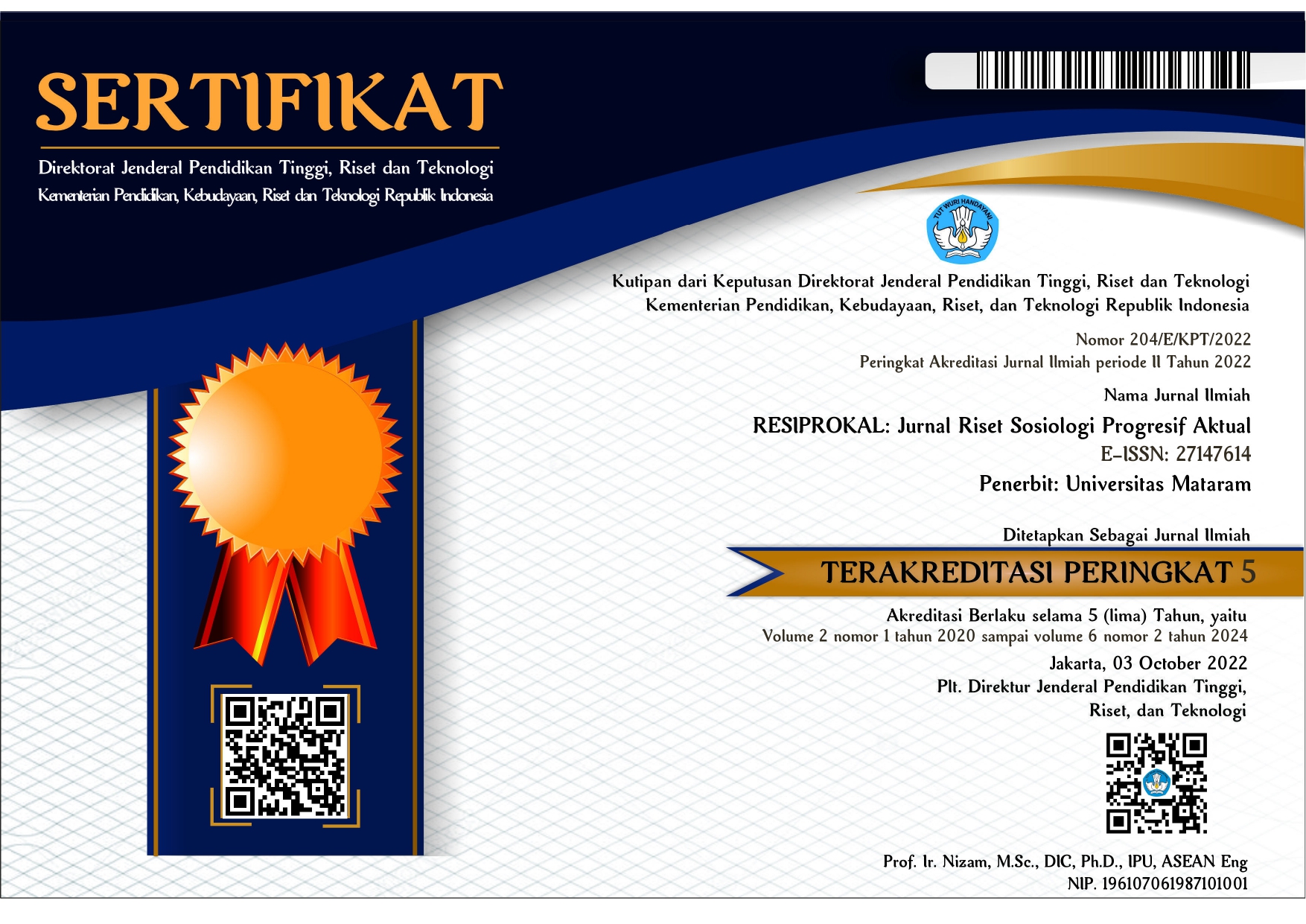Modal Sosial Sebagai Strategi Pemulihan Pasca Gempa Di Desa Gondang Kecamatan Gangga Kabupaten Lombok Utara
DOI:
https://doi.org/10.29303/resiprokal.v2i1.26Keywords:
Social Capital, Strategy, Post-Disaster RecoveryAbstract
The study was entitled "Social Capital as a Post-Earthquake Recovery Strategy in Gondang Village, Gangga District, North Lombok Regency." The impact of the earthquake not only resulted in damage to infrastructure and, residential buildings, and other social facilities, but earthquakes also result in psychological conditions and underdevelopment of socio-economic life, which is caused by the paralysis of all sectors of the people's line of life. This research is a qualitative research which aims to explain and find social capital owned by the community in the post-disaster recovery process in Gondang village, Gangga District, North Lombok Regency. The focus of this research is to find and identify forms of social capital in the village of Gondang, then how the form of social capital is used as a post-earthquake recovery strategy. This study aims to identify the forms of social capital, and find out the form of social capital as a post-earthquake recovery strategy. This study uses the theory and concept of social capital from James S. Coleman who was born from his rational choice theory. This research also uses qualitative methods using case studies, and data and information collection techniques using in-depth interviews, field observations and documentation results that contain photos, videos and other documents obtained from various parties. Activities in data analysis are data reduction, data presentation, approval / verification, and credibility The results showed the form of social capital in Gondang Village community consisting of beliefs, networks and norms. Community trust in religion, trust in government, trust in volunteers, and trust in community members. The formed network is a network originating from inside and outside the community, inside network is a relation from P3A and KWT, and network from outside is a relation from ACT. As well as the values and norms that are still implemented by the community, namely dead gawe and live gawe, as well as the subak and loving system. While the form of social capital is the result of traditions or customs in the form of sangkep, ngibukang, and nembakuh. As well as values and norms in the form of strong community ties and solidarity, which are the result of the application of inherent traditions or customs.








